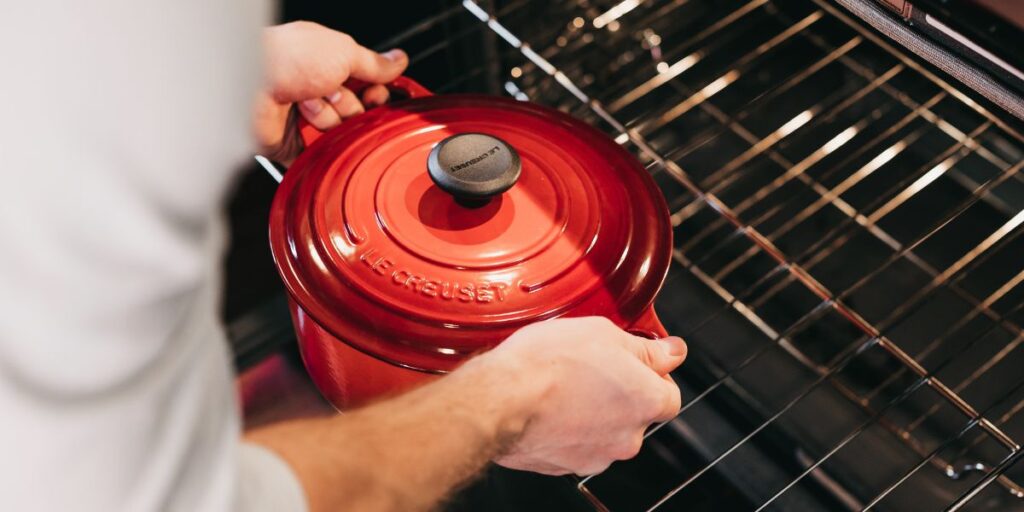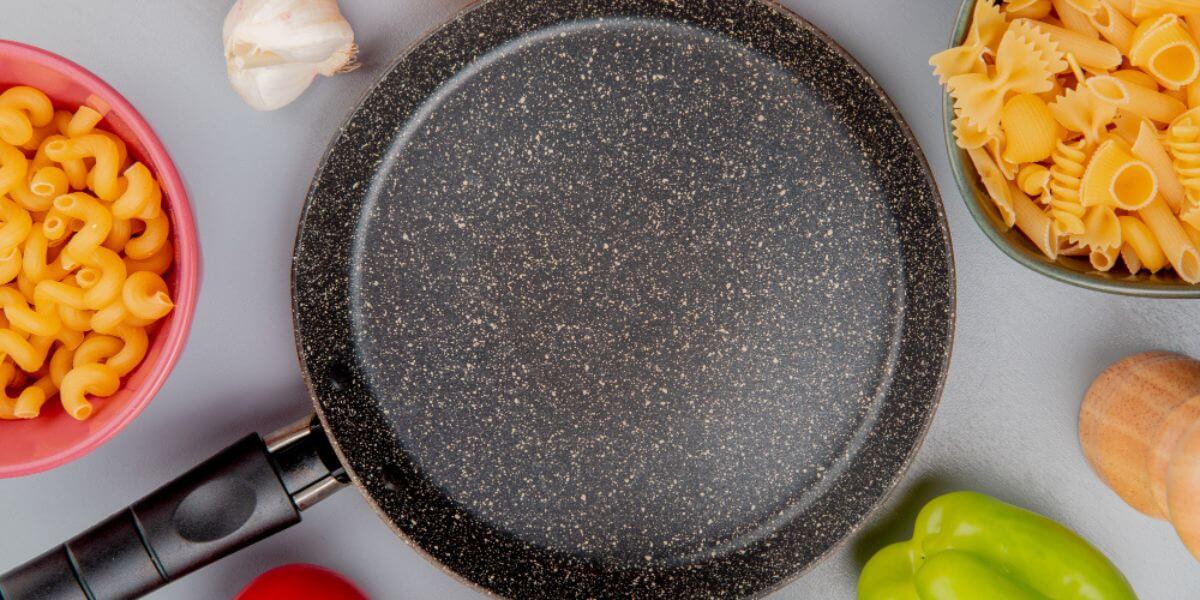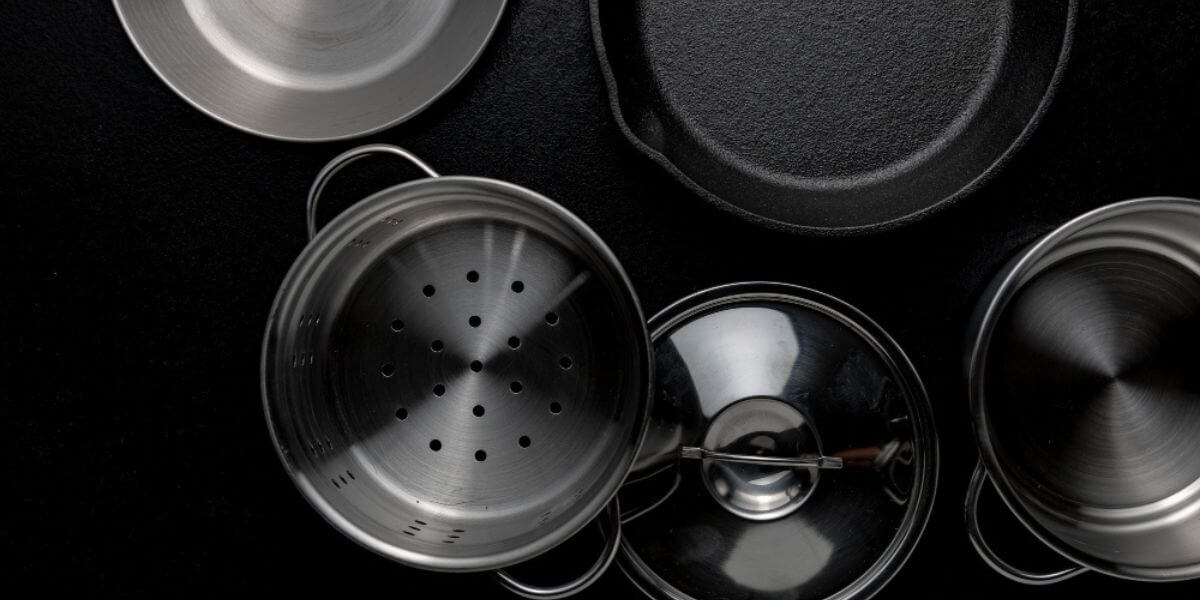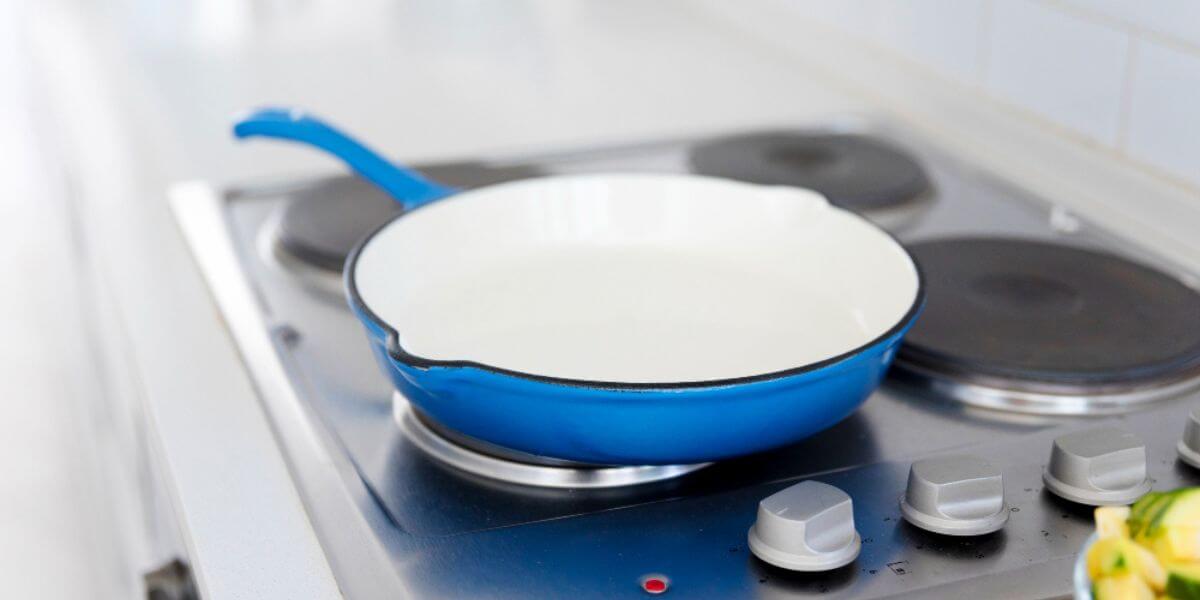Ceramic vs Stainless Steel Cookware: Choose The Best One


Ceramic vs stainless steel cookware, when it comes to choosing the perfect pan for your kitchen, you have many options. However, ceramic and stainless steel pans are the most popular options. Both pans have unique benefits and drawbacks, and choosing between them can be difficult. This article will explore the differences between ceramic and stainless steel pans and help you decide when to choose the perfect pan for your needs.
Introduction
Cookware is an essential part of every kitchen, and choosing the right type of pan is crucial for your cooking experience. Ceramic and stainless steel pans are popular options with unique features that suit different cooking styles and preferences. Here we will explore the pros and cons of ceramic and stainless steel pans and help you decide on the right choice.
Ceramic Cookware

Ceramic cookware is made from various materials, including clay, sand, and minerals. These materials are heated at high temperatures to create a non-stick surface perfect for cooking. Here are some pros and cons of ceramic pans:
Pros
Non-stick surface: Ceramic pans have a non-stick surface, so you can cook without worrying about your food sticking to the pan.
Easy to clean: Ceramic pans are easy, as food doesn’t stick to the pan’s surface.
Even heat distribution: Ceramic pans distribute heat evenly, which means your food will cook evenly.
Versatile: Ceramic pans use for various cooking methods, including frying, sautéing, and baking.
Cons
Not as durable: Ceramic pans are not as durable as stainless steel pans, as the non-stick surface can scratch easily.
Limited heat tolerance: Ceramic pans are unsuitable for high-heat cooking, as they can crack or warp when exposed to high temperatures.
Limited searing ability: Ceramic pans are unsuitable for searing meat, as they don’t get hot enough to create a good sear.
Recommended Ceramic Pans to Buy
XYZ Ceramic Pan
The XYZ Ceramic Pan is a highly regarded option among home cooks. It boasts a durable ceramic coating that ensures food doesn’t stick, simplifying cooking and cleaning. This pan is designed to distribute heat evenly, preventing hot spots and allowing for precise temperature control.
PROS
CONS
ABC Ceramic Pan
The ABC Ceramic Pan is a versatile option that caters to various cooking needs. Its ceramic coating offers exceptional non-stick performance while reducing the need for excessive oil or butter, promoting healthier cooking habits. Furthermore, this pan is renowned for its durability and longevity.
PROS
CONS
DEF Ceramic Pan
The DEF Ceramic Pan is a budget-friendly option that doesn’t compromise quality. It features a reliable ceramic coating with a non-stick surface, making cooking and cleaning a breeze. With its sleek design and affordable price point, this pan appeals to novice and experienced cooks.
PROS
CONS
Stainless Steel Cookware


Stainless steel cookware is made with various metals, including chromium and nickel. These metals are heated, formed into a pan, and then polished to create a shiny, non-reactive surface. Here are some pros and cons of stainless steel pans:
Pros
Durable: Stainless steel pans are extremely durable and can last years if cared for properly.
High-heat tolerance: Stainless steel pans can withstand high temperatures, making them suitable for searing and other high-heat cooking methods.
No reaction with food: Stainless steel pans are non-reactive, so they won’t react with acidic foods like tomatoes or lemon juice.
Easy to maintain: Stainless steel pans are easy to clean and maintain and can be washed in the dishwasher.
Cons
Poor heat distribution: Stainless steel pans don’t distribute heat evenly, so your food may cook unevenly.
Food can stick: Stainless steel pans are not non-stick, which means your food may stick to the pan if you don’t use enough oil or butter.
Limited versatility: Stainless steel pans are best for searing and other high-heat cooking methods and may not be suitable for other types of cooking.
Recommended Stainless Steel Pans to Buy
XYZ Stainless Steel Pan
The XYZ Stainless Steel Pan is a highly acclaimed option known for its superior craftsmanship. It features a multi-layer construction with an aluminum or copper core, ensuring excellent heat distribution and retention. The stainless steel interior provides a non-reactive cooking surface, making it suitable for various recipes.
PROS
CONS
ABC Stainless Steel Pan
The ABC Stainless Steel Pan is a versatile option that combines functionality and affordability. It features a tri-ply construction with an aluminum core sandwiched between stainless steel layers. This design ensures efficient heat distribution and allows for precise temperature control.
PROS
CONS
DEF Stainless Steel Pan
The DEF Stainless Steel Pan is a budget-friendly option that doesn’t compromise performance. It features a single-layer stainless steel construction that provides durability and even heat distribution. This pan is perfect for everyday cooking tasks.
PROS
CONS
Ceramic vs Stainless Steel Cookware: Which One Should You Choose?
Choosing between ceramic and stainless steel pans can be difficult, as both types have unique features. Here are some factors to consider when making your decision:
Heat distribution
Ceramic pans are known for their even heat distribution, meaning food is cooked evenly across the pan’s surface. Because the ceramic material retains heat well and distributes it evenly, stainless steel pans may have hot spots due to uneven heat distribution, which can cause food to cook unevenly.
Cooking versatility
A ceramic pan may be your best option if you enjoy cooking various dishes. Ceramic pans are versatile and used for various cooking methods, making them a great choice for most home cooks. On the other hand, if you love to sear meat or cook at high temperatures, a stainless steel pan may be the better choice.
Durability
Stainless steel pans are durable and can be lasting years if properly cared for. However, ceramic pans are not as durable, as the non-stick surface can scratch easily. If you want a pan that will last for a long time, a stainless steel pan may be the better choice.
Non-stick surface
Ceramic pans have a non-stick surface, so you can cook without worrying about your food sticking to the pan. However, this non-stick surface can scratch easily and may not last as long as a stainless steel pan. If you want a non-stick pan that is also durable, then a stainless steel pan with a non-stick coating may be the best option.
Heat tolerance
Ceramic pans are unsuitable for high-heat cooking, as they can crack or warp when exposed to high temperatures. On the other hand, stainless steel pans can withstand high temperatures and are perfect for searing meat or cooking at high temperatures.
Price
Ceramic pans are generally more affordable than stainless steel pans, making them a great choice for budget-conscious home cooks. However, stainless steel pans are more durable and may last longer, making them a better long-term investment.
Conclusion
Choosing between ceramic and stainless steel pans can be difficult, as both have unique benefits and drawbacks. When deciding, consider your cooking style, durability needs, non-stick surface preference, heat tolerance, and budget. Considering these factors, you can choose the proper pan for your kitchen needs.
Frequently Asked Questions
Can I use a ceramic pan on an induction cooktop?
Not all ceramic pans are suitable for use on induction cooktops. Check the manufacturer’s instructions to see if your pan is compatible.
Are stainless steel pans dishwasher safe?
Yes, most stainless steel pans are dishwasher-safe. However, check the manufacturer’s instructions to be sure.
Can I use a metal pot on a ceramic pan?
Using metal utensils on a ceramic pan is not recommended, as they can scratch the non-stick surface. Use wooden or silicone utensils instead.
How can I prevent food from sticking to a stainless steel pan?
Use enough oil or butter to prevent food from sticking to the pan. You can also preheat the pan before adding food to help prevent sticking.
Can I use a stainless steel pan in the oven?
Yes, most stainless steel pans are oven-safe. Check the manufacturer’s instructions to be sure.



